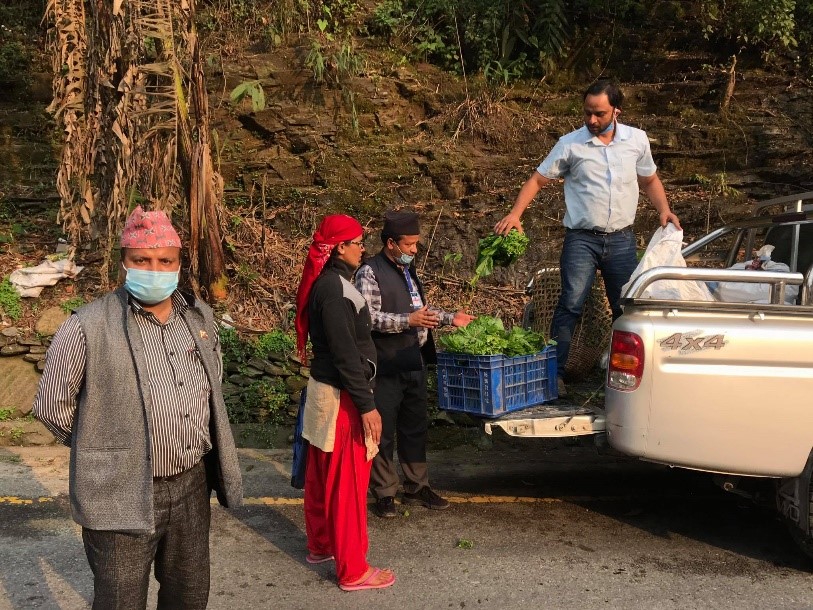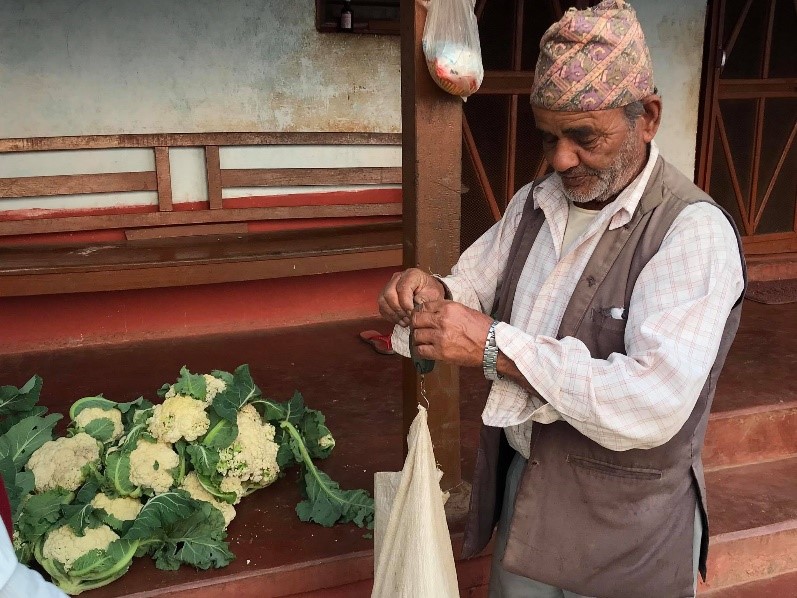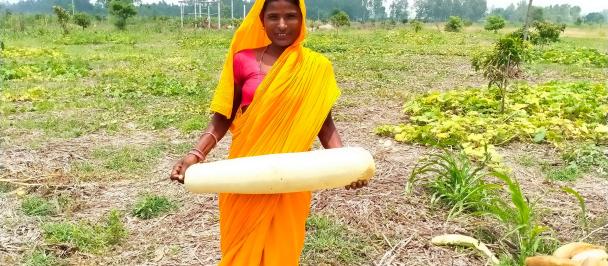By Chiranjivi Adhikari
Agriculture ambulance: Aiding farmers during the crisis
July 4, 2020
When the COVID-19 lockdown suddenly restricted movement across the country, it was the farmers who suffered the most. Their produce, especially fruits and vegetables, started rotting on the farm. They desperately needed a rescue.
A quick solution was needed to rescue and deliver the vegetables that otherwise would go to waste. The pandemic had completely disrupted the demand and supply chain of perishable agriculture products. While the farmers were worried about not getting an access to their market to sell their produce, the consumers, on the other hand, were deprived of fresh vegetables. The news of farmers dumping their vegetables and pouring milk in the middle of the road was flooding the news media during the lockdown period. On the contrary, regular entry of tons of vegetables from the Indo-Nepal border continued to dismay the Nepalese farmers.
A quick solution was to deploy what is now popularly known as “agricultural ambulance”
First initiated by the Phedikhola Rural Municipality with technical and financial support of the Value Chain Development Project, a joint initiative of the Ministry of Agriculture and Livestock Development (MoALD) and UNDP funded by KOICA, the idea was soon replicated by other municipalities.
Mayor Ghanshyam Subedi of Phedikhola Rural Municipality in Syangja district of Gandaki province rightly says “we do not have to do big things to change the society; even a small step could lead to the most significant outcome”. Once the first vehicle took off very well, the municipality started hiring more private vehicles for the service. Shishir Pandit, Agriculture Technician of the Phedikhola Rural Municipality says this small support has brought smiles to many farmers.
The principal aim of the ambulance was to collect the agriculture products from the nooks and corners of the villages and sell them to the local and city markets at a reasonable price.
A single vehicle was able to collect and sale more than 16 tons of vegetables within a couple of weeks and benefit hundreds of farmers as well as thousands of consumers. The perishable vegetable items collected so fare include green leafy vegetables, pea, cauliflower, cabbage, tomato, and other seasonal vegetables. The same agri ambulance has also come handy in rescuing the dairy farmers.
Special arrangements have been made to ensure that vegetables and milk products do not go waste even when the farmers cannot sell them immediately. The value chain project, in collaboration with the rural municipalities, has constructed a cold-room of 10-ton capacity to collect and store agri produce from villages adjoining the Pokhara Metropolitan City. The storage facility is the main supply center for the local markets in Syangja and Kaski.
The agriculture ambulances have also been used to provide production inputs like agri-lime, improved seeds, pesticides to farmers’ groups along with technical guidance from experts. The value chain project provides technical guidance and production inputs to farmers.
Dhundi Raj Paudel, a farmer of Jogithok, appreciated the measure taken by the rural municipality: “I was worried that my produce would not reach the market. This would mean a big loss to me. I would not be able to invest in preparing for the next season. I am glad that the rural municipality helped us reach the market and sell out produce at an excellent price. I also received improved seeds to prepare for the nest season.”
The idea of agricultural ambulance has now been expanded to over a dozen municipalities across the country.
The value chain development of fruit and vegetables project aims to increase farmers’ income. A focus is placed on production support with enhanced access to extension, postharvest loss management, and market linkage improvement. Over the next three years, the project is expected support 10,000 smallholder farmers in 12 districts in Bagmati and Gandaki province.
About the Author
Mr. Chiranjivi Adhikari is the National Project Manager of the Value Chain Development Project, funded by KOICA and UNDP.

 Locations
Locations




